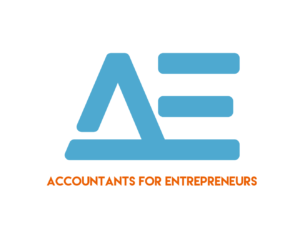
Now that you have received your PPP loans as a business owner, I can see the relief in your face. But the big question now is what do I need to do to ensure the loan amount is forgivable?
The PPP has come out with a set of guidelines on what a small business has to do in order to get the loan amount forgiven. Here are our suggestions on how to stay compliant with those rules.
Suggestions
1) Qualified uses: At least 75% of your PPP loans need to be used for payroll expenses (independent contractor’s pay does not count towards payroll expenses). The remaining amount of the loan can be used for mortgage interest, rent, and utilities. [New Paycheck Protection Flexibility Act has changed the % from 75% to 60%]
2) Spend it within 8 weeks: From the time the loan was issued, please keep in mind that your loan amount is based on 2.5 months of your payroll expenses, which is 10 weeks’ worth of payroll. However, you only have 8 weeks to spend it in order for your loan to be forgiven. If you need to adjust your payroll timing or headcount to pay out the whole PPP loan within 8 weeks, do so. Any loan amount not used for the qualified purposes will not be forgiven. [New Paycheck Protection Flexibility Act has increased the period from 8 to 24 weeks]
3) Payroll headcount needs to be maintained: Compare the average number of full time employees for the 8 weeks following the loan disbursement with 1) employee headcount from Jan 1, 2020 to Feb 29, 2020 or 2) headcount from Feb 15, 2019 to June 30, 2019 [Now December 31, 2020]. Ensure that the headcount for the 8 weeks [now 24 weeks] following the loan disbursement is equal to or larger than either of the comparison periods.
Exemption: Many employers are complaining that their headcount levels cannot be maintained due to employee refusal to return to work. There is an exemption of this headcount rule if the employer can provide either of the following:
- A written re-hire offer with the same rate of pay and number of hours before the employees were laid off and.
- A rejection to the offer from the employee.
Employees who refuse offers will no longer be able to continue with the unemployment benefits.
4) Payroll amount needs to be at least 75% from the most recent quarter: Before the 8 week [now 24 weeks] loan period is complete, with the exception of any employees who receive more than $100,000 in salaries in 2019. Any reduction in pay lower than the 75% level will reduce the forgivable portion of the loan by the difference between the employee’s current pay and 75% of the original pay.
If you have previously laid off or furloughed any employees or reduced their original pay by more than 25%, you are able to reinstate their pay and rehire them before June 30, 2020. [Now December 31, 2020]
5) Documentation and books need to be maintained: Lenders will ask you to provide the following documents. You need to have these ready:
- Form 941
- Payroll records
- Other health insurance and retirement contribution documents to support your claim.
6) Currently, the forgivable loan is not taxable and expenses used under the forgivable portion of the loan is therefore not tax deductible to prevent double dipping. This means your expenses need to be clearly labeled in your books and to identify the expenses being paid by the PPP Loans. Also, we recommend business owners to house their PPP loans in a separate bank account so any expenses paid out of PPP loans are traceable and easily trackable. This will be very helpful when it comes time to file your 2020 tax returns and provide proof of your expenses.
7) For self-employed (Sch. C) business owners, it’s even more important to maintain good record keeping of your books and documents to prove that you have met the PPP loan forgivable guidelines. This ensures funds are used appropriately.
8) The amount of forgivable loans for self employed individuals on owner’s compensation replacement is calculated based on your 2019 Sch. C net profit multiplied by 8/52 weeks. Any remaining amount will need to be used for mortgage interest, rent payments, and utilities.
9) For new businesses in 2020 that were not in existence in 2019 but were in business before Feb 15, 2020, there has not been clear guidelines from the SBA on how to calculate the owner’s compensation replacement yet. We will keep you updated.
10) File your 2019 tax returns and apply for forgiveness with your lenders. Deadline for the 2019 federal tax return has been extended. If you have already submitted your Sch. C to your lenders, you might want to file the tax return but delay the payment until July 15. You will also need to apply for forgiveness with your lenders after your 8 week [now 24 week] period.
11) Some payroll credits are not allowed if you have a PPP loan. This is to prevent double dipping since the forgivable portion of the PPP loan is not taxable. So if you have a PPP loan, you will not be qualified for the Payroll Reduction Credit. For more information on what other credits and benefits your business is eligible for, please check out our article here.
If you’re looking for help filing your tax returns (including back tax filings), bookkeeping for your business, or catch-up bookkeeping services, please feel free to contact us. We want to ensure your books are clean, your taxes are up to date, and your PPP loans are forgiven.

0 Comments